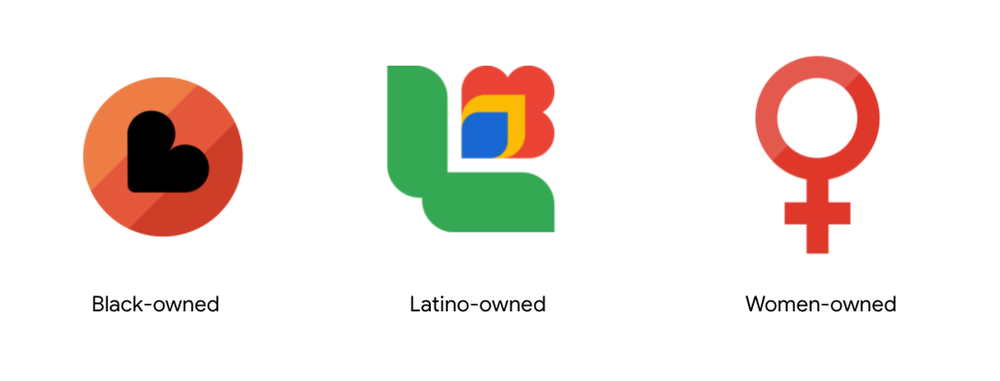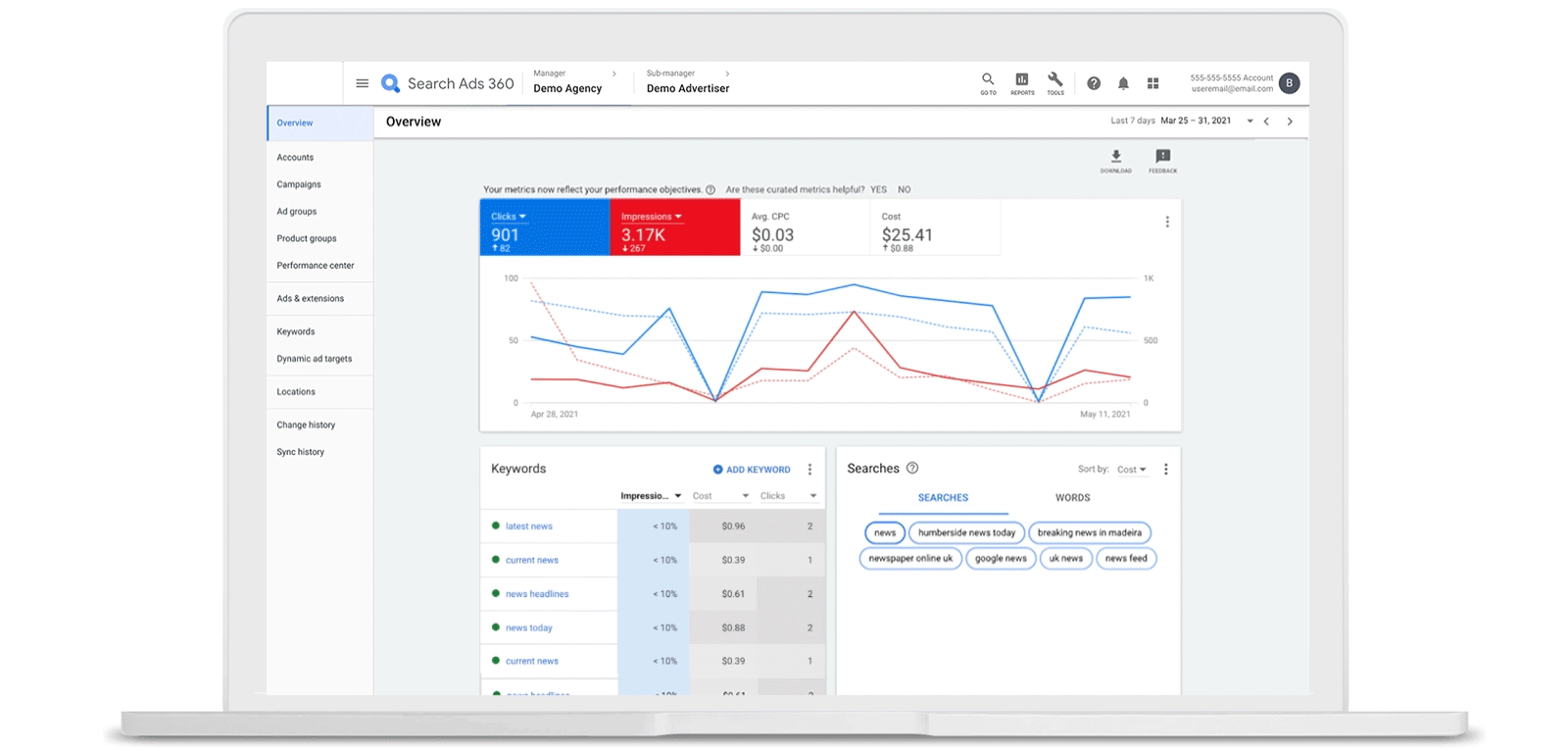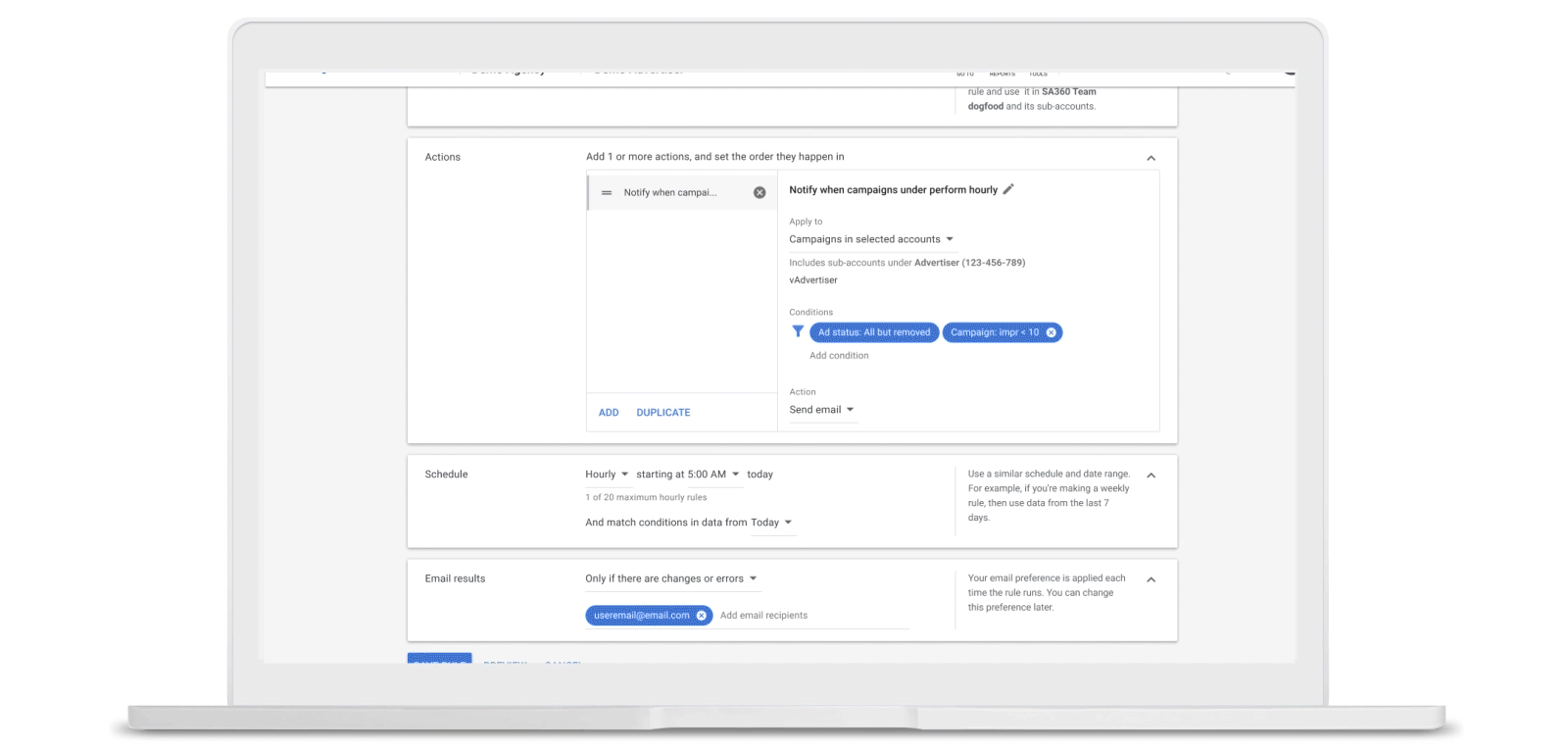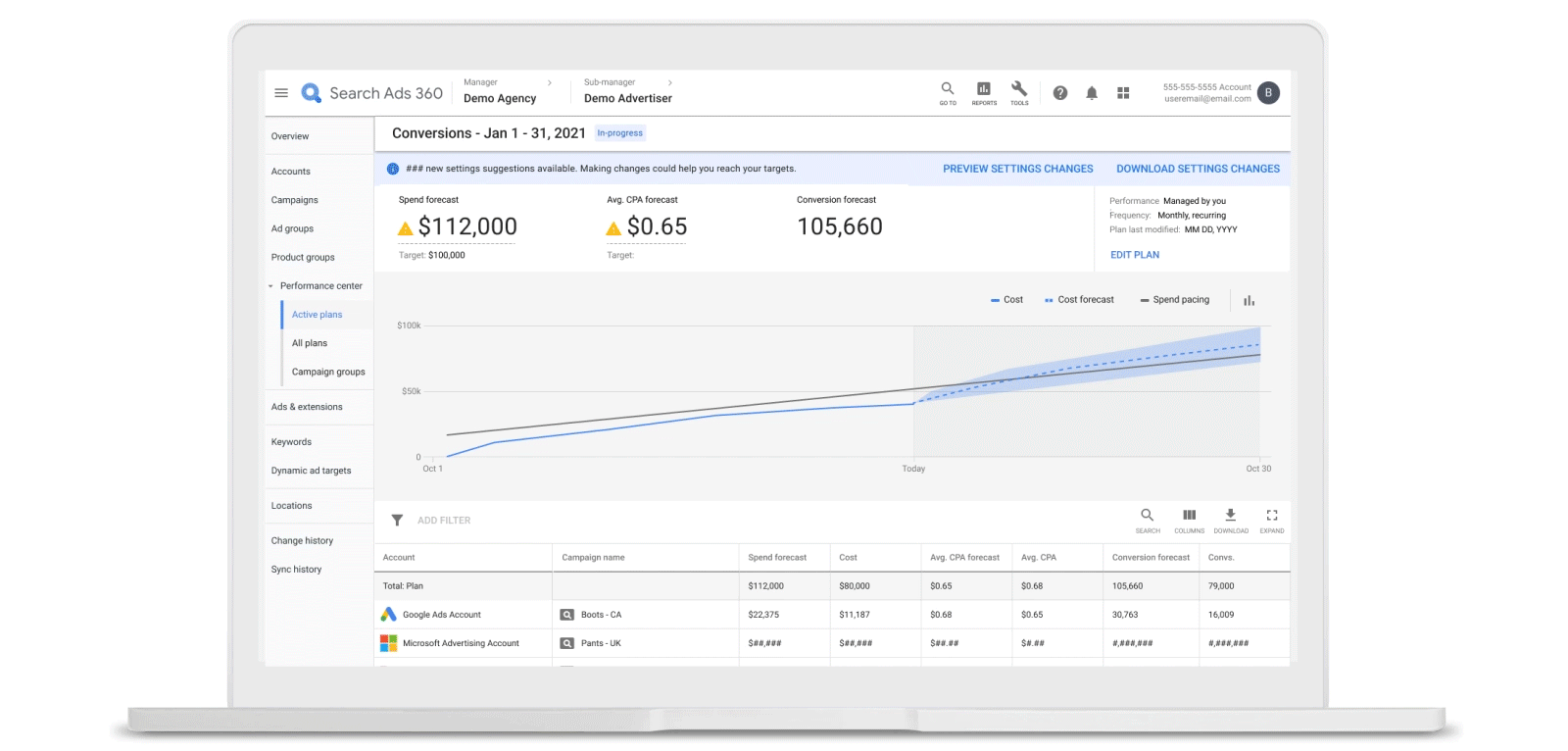Connected TV (CTV) has become the go-to spot for people to kick back and enjoy their favorite content. According to Nielsen, over 50% of ad-supported streaming watch time happens on YouTube CTV for people ages 18 and up.
It’s also helped advertisers reach their audiences in smarter and more efficient ways. But we know there are challenges — like the ability to effectively plan and measure cross media, from creator shows to live TV. So we've been focused on bringing better digital ad capabilities to CTVs to allow for consistent planning and measurement across platforms, while improving the viewer experience. And today, we’re sharing some of our newest solutions.
We’re partnering with Nielsen to help advertisers understand how their YouTube CTV and YouTube TV reach delivers in comparison to other services. New tools will also help advertisers measure their total audience reached by YouTube CTV and deliver an even stronger CTV viewing experience.
Invest with confidence
Last year, we launched Nielsen Digital Ad Ratings (DAR) and Comscore Campaign Ratings (CCR) to help you more easily measure your YouTube CTV campaigns alongside other media. Later this year, YouTube CTV and YouTube TV will be available in Nielsen Total Ad Ratings (TAR) in the U.S. This release will include deduplication of YouTube inventory across all platforms — CTV, computer, mobile and linear TV — to better compare YouTube reach to linear TV.
Later this year, YouTube CTV and YouTube TV will be available in Nielsen Total Ad Ratings (TAR) in the U.S.
You’ll also see CTV device metrics within your media mix model (MMM) data feed, which can help measure sales outcomes and share insights on the impact of your YouTube CTV investment. To make the data analysis process faster for clients and easier for our measurement partners, we’ve launched a new data platform for MMM providers and advertisers to request data, track the status of those requests and ingest data directly.
We know MMMs provide one of the most important litmus tests for any video platform — does it actually work? On the most important metrics, YouTube is driving strong business results for customers. According to an MMM meta-analysis Google commissioned with Nielsen, on average, YouTube CTV was 3.1 times more effective than TV across U.S. consumer packaged goods (CPG) MMMs that measured YouTube CTV and TV (2021).
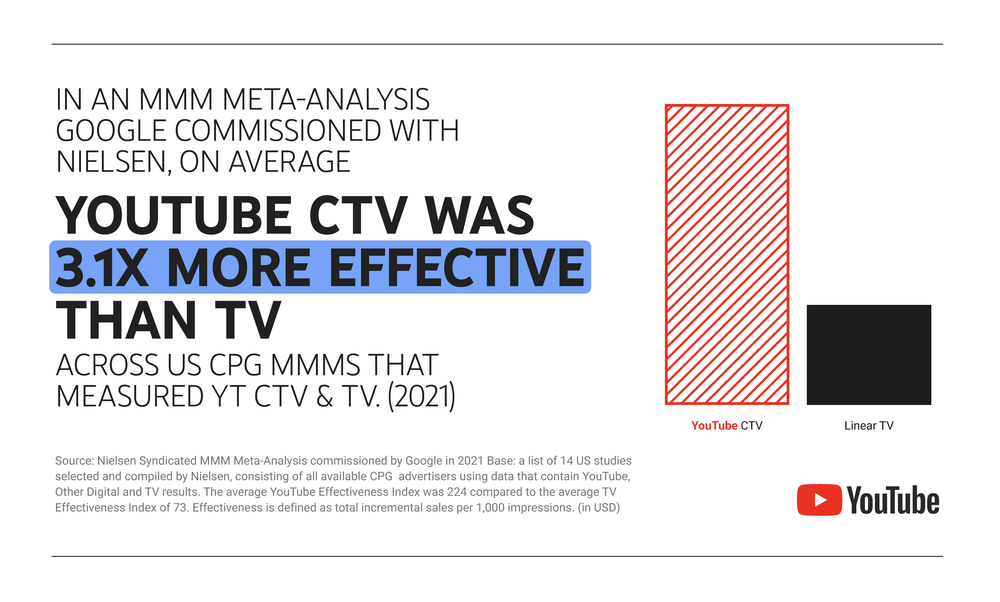
Account for everyone
Just like the decades-old tradition of gathering around the TV set, people are watching YouTube with their friends and family. In a study with Nielsen, we found that 26% of the time, multiple 18+ viewers are watching YouTube together on the TV screen, compared to 22% on linear TV.
Accounting for multiple people, or “co-viewers,” has been a core part of TV measurement for years. To help you measure the same behavior with YouTube CTV and get an accurate picture of the total audience you’re reaching, co-viewing will be included in Nielsen's DAR guarantees ad reporting in the U.S. Advertisers will also have access to co-viewing metrics across Google’s planning and measurement solutions globally.
To help you measure the same behavior with YouTube CTV and get an accurate picture of the total audience you’re reaching, co-viewing will be included in Nielsen's DAR guarantees ad reporting in the U.S.
Whether you’re forecasting an upcoming campaign or reviewing post-campaign reports, you’ll soon see reach, frequency and an additional impression metric that accounts for all viewers on CTV. This means more accurate reach forecasts and campaign reports with an apples-to-apples comparison between YouTube and the rest of your linear and connected TV buy — ultimately helping you make smarter investment decisions. Our methodology is designed to meet the industry standard of co-viewing measurement. Learn more about how it works.
Co-viewing metrics will roll out globally across Google Ads and Display & Video 360 planning and measurement tools by the end of Q2 2022.
Reach the right audience, at the right frequency
We know it’s not all about reach. You also want to reach the right audience at the right frequency. Last month, we announced a new CTV frequency solution that allows for a better viewer experience and more efficient use of your CTV media dollars.
For the first time with Display & Video 360, you can manage CTV ad frequency across YouTube, YouTube TV and other connected TV apps. This lowers your risk of triggering ad fatigue for viewers, while adding more reach for the same ad budget. Early results show that this new functionality also significantly improves media performance for advertisers.
For the first time with Display & Video 360, you can manage CTV ad frequency across YouTube, YouTube TV and other connected TV apps.
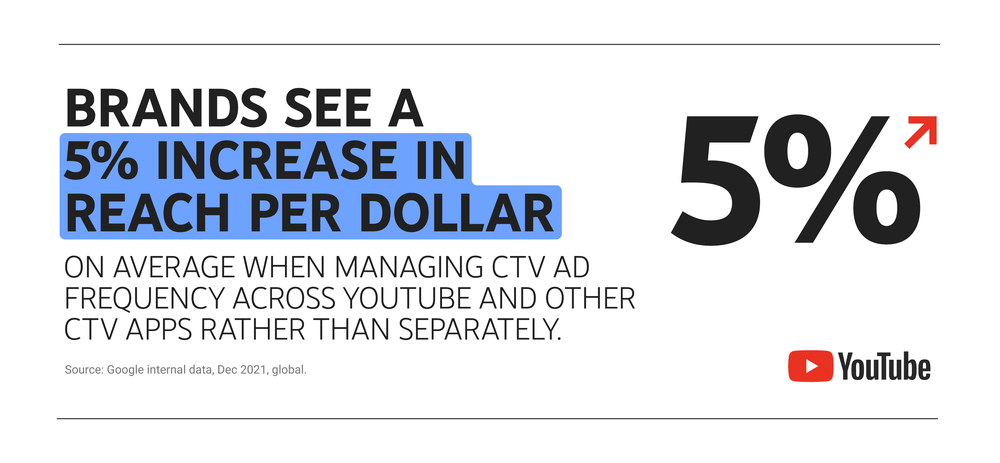
In addition to frequency management, you can use other Google audience solutions with YouTube CTV to help boost performance and reach the most relevant viewers for your brand.
Drive results with leading CTV capabilities
Top brands are taking advantage of these digital-first capabilities to grow their business.
In 2021, DoorDash, alongside its agency Kepler Group, ran a six-week CTV campaign on YouTube to reach a large audience quickly, which ultimately drove a 50% incremental uplift in DoorDash driver sign-ups.
While viewers are watching the content they love on YouTube CTV, brands are driving real results. Reach out to your Google sales team to learn about YouTube CTV ads and these new planning and measurement solutions.
